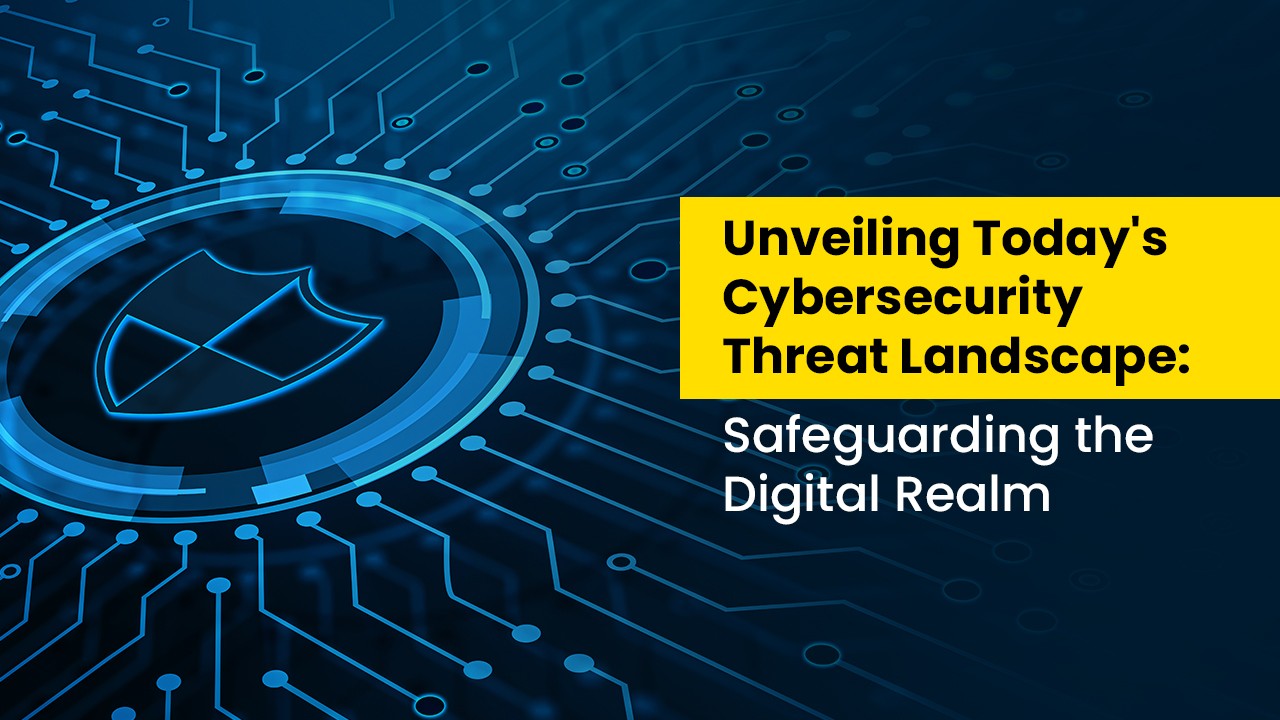Cyberspace refers to the virtual environment of computer networks where online communication occurs. It encompasses the internet and all digital interactions.
This digital expanse is the realm where information is shared, business transactions happen, and social connections are made. As digital technology advances, cyberspace becomes increasingly complex, integrating into every aspect of modern life. Ensuring safety and security within cyberspace is paramount as it holds vast amounts of personal and corporate data.
Understanding this virtual space is essential for navigating the contemporary digital world, particularly for businesses aiming to maintain a robust online presence. These entities utilize cyberspace for marketing, customer engagement, and the execution of myriad digital strategies that drive success in today’s internet-driven economy.
The Genesis Of Cyberspace
The term cyberspace captures the vast digital landscape where data travels, interactions happen, and digital lives flourish. Tracing its roots takes us on a fascinating journey, from visionary concepts to the concrete digital realm we navigate daily. Understanding this origin story unveils how cyberspace became the backbone of the modern world.
Early Concepts And Visions
The idea of a networked virtual space first emerged in the minds of technological prophets.
- Vanavar Bush imagined the “memex” as a personal knowledge device in 1945.
- JCR Licklider dreamed of an “Intergalactic Network” in the 1960s.
- These pioneers believed in a future interconnected world.
From Science Fiction To Reality
The leap from ideas to functional cyberspace started with fiction.
William Gibson’s Neuromancer introduced the term “cyberspace” in 1984.
He depicted a virtual realm people could fully immerse into.
The tech community took inspiration and began shaping today’s Internet.
| Year | Development |
|---|---|
| 1945 | Bush’s “memex” idea |
| 1960s | Licklider’s “Intergalactic Network” |
| 1984 | Gibson coins “cyberspace” |
| 1990s | Internet becomes mainstream |
The transformation of cyberspace from speculation to spine of the digital world is a testament to human creativity and technological prowess.

Credit: www.amazon.com
Demystifying Cyberspace
In the swirling digital tide, understanding cyberspace is a must. This vast frontier is more than a simple web of networks. It shapes how we interact, learn, and evolve. Welcome to the digital odyssey that demystifies cyberspace.
Defining The Digital Realm
Cyberspace is the invisible landscape where digital communication happens. It’s not a physical space. We enter it whenever we log on to our computers or smartphones. It holds data, online communities, and endless streams of information.
- Built from code: Cyberspace is a construct of digital language.
- Virtual ecosystem: It’s a habitat for data to live, grow, and interact.
- Borderless expanse: In cyberspace, global reach has no limits.
Cyberspace Vs. Internet: Knowing The Difference
People often use ‘cyberspace’ and ‘Internet’ interchangeably. They are linked, yet distinct.
| Cyberspace | Internet |
|---|---|
| An ecosystem where digital interactions occur | A physical network connecting computers globally |
| Encompasses all forms of digital networks | One part of the larger cyberspace |
| Includes the Internet, private networks, software, and data | Specific global system of IP connections |
The Architecture Of Cyberspace
Think of cyberspace as a vast building, with endless rooms and hallways. This building, unlike those we see, is not made of bricks or wood. It’s built with code and data. Understanding its architecture helps us navigate and protect it.
How Data Structures Create Digital Worlds
Just like buildings rely on blueprints, cyberspace runs on data structures. They organize our digital world. Imagine having millions of LEGO blocks. Data structures are the rules that tell us how to put these blocks together.
- Databases store information like books in a library.
- Algorithms are step-by-step instructions for solving problems.
- Data trees organize points called nodes, like a family tree.
The Role Of Networks And Servers
Imagine cyberspace as a city. Networks are the roads that connect everything. Servers are like buildings, holding all the information. They need to be strong and secure, like a bank vault.
| Networks | Connect users to cyberspace |
| Servers | Store and manage data |
Together, they let us send emails, share photos, and watch videos. The better the network and servers, the faster our digital city moves.

Credit: www.linkedin.com
Cyberspace: A Societal Perspective
Cyberspace is more than just the internet. It is a vast, invisible terrain where humans interact, share, and create. This terrain shapes our society in many ways. Our focus today is on how cyberspace impacts our world from a social standpoint.
Impact On Human Interaction
In the realm of cyberspace, human connections take on new forms. Conversations happen in a flash. People from different continents become friends easily. Traditional boundaries of time and distance fade away. Here are some ways how:
- Social Networks: Platforms like Facebook and Twitter let us share life moments instantly.
- Online Gaming: Games connect people of all ages for play and competition.
- Virtual Meetings: Tools like Zoom bridge gaps, making face-to-face chats simple from anywhere.
Evolving Norms And Laws Governing Digital Spaces
As cyberspace grows, rules and norms evolve too. It’s important to understand both formal and casual rules. Check them out:
| Type | Details |
|---|---|
| Privacy Regulations | Laws like GDPR protect personal data in the digital world. |
| Netiquette | The do’s and don’ts online ensure respect and understanding across platforms. |
| Content Moderation | Policies by platforms to keep spaces safe and inclusive for all. |
Remember, these laws and norms help keep cyberspace secure and friendly for everyone.
Economic Engines In Cyberspace
Cyberspace sparkles with digital activities that drive modern economies. The virtual realm has its own robust engines that fuel economic growth. These engines offer unique opportunities for business and finance, functioning 24/7 across the globe.
E-commerce And Virtual Marketplaces
Think of a bustling market; now imagine it online. That’s e-commerce. Buyers and sellers meet in this digital space to exchange goods and services. Virtual marketplaces are the storefronts of today, and they have a few special benefits:
- Access anywhere: Shop from home, the park, or while on a train.
- No closing time: Buy a birthday gift at midnight if you want!
- Global reach: Sell a handcrafted vase to someone across the world.
Digital Currencies And Assets
Digital currencies, like Bitcoin, are the new breed of money. They live purely in cyberspace. People use them for quick payments, investments, or to keep money safe. Digital assets, from ebooks to online courses, have infinite copies and zero storage costs. Here’s what they offer:
| Advantages of Digital Currencies | Benefits of Digital Assets |
|---|---|
| Fast global transactions | Instant delivery |
| Lower fees than traditional banking | No physical inventory |
| Private and secure | Easily updated or modified |
Security Threats In The Digital Domain
Imagine a world invisible to the eye, a world where information flows like rivers and where data lives in every corner; this is cyberspace. In this digital realm, safety matters just as it does in the real world. Just like the physical space we occupy, cyberspace is prone to various sorts of threats that can harm individuals, organizations, and even entire nations.
Understanding Cybercrimes
Cybercrimes are illegal actions where criminals use the internet to steal, harm, or create fear. Think of it as a thief who breaks into a digital house. The thief can steal important things like credit card information, personal details, and intellectual property. Cybercrimes come in many forms, including scams, hacking, identity theft, and more. Everyone needs to know how these crimes happen to protect themselves.
- Phishing: Tricks to get personal info.
- Malware: Bad software that harms your computer.
- Ransomware: Locks your files until you pay.
Strategies For Cybersecurity
Keeping safe in cyberspace is much like locking your doors at night. It requires smart cybersecurity strategies. This means setting up defenses to keep the bad guys out. Strategies include:
- Strong Passwords: These are keys to your digital locks.
- Software Updates: They patch holes in your digital walls.
- Antivirus Programs: They act like guards against malware.
Education is another weapon. It’s important to teach people how to recognize threats. This way, they know not to open a digital door for strangers. With the right knowledge and tools, staying safe in cyberspace becomes possible.
Cultural And Ethical Considerations
As we delve into cyberspace, a vast network where communication, information, and entertainment intersect, we encounter rich cultural fabrics woven into this digital expanse. Equally integral are the ethical benchmarks that guide users’ behaviors within this abstract space. In this section, we explore the cultural nuances and moral compass that shape interactions in the ever-evolving world of cyberspace.
Identity And Community In Cyberspace
The notion of identity in cyberspace paints a complex landscape. Users craft personas that may differ vastly from their real-world selves. These digital identities impact the way individuals interact and form communities online.
- Online anonymity allows freedom of expression
- Social platforms enable diverse communities to unite
- Cyberspace blurs geographical and cultural boundaries, forging global connections
Virtual communities become spaces for support, knowledge sharing, and advocacy. The digital tapestry of forums, chat rooms, and social media groups reflects a spectrum of beliefs, interests, and backgrounds.
Ethical Dilemmas Of The Digital Age
Cyberspace poses unique ethical challenges. The absence of physical barriers and the speed at which information travels create fertile ground for ethical quandaries.
- Data privacy concerns educate users on digital footprints
- Intellectual property rights demand respect for content creators
- Online behavior sets precedents for acceptable conduct
The digital age demands a robust ethical framework. This ensures fairness, respect, and integrity guide cyberspace engagements.
The Future Of Cyberspace
Cyberspace is evolving rapidly, becoming an integral part of our lives. It transforms how we connect, work, and play. As we gaze into its future, we see a landscape brimming with limitless possibilities. Let’s unearth the technological advancements that will shape the digital realm.
Emerging Technologies Shaping Digital Spaces
- Virtual Reality (VR): Creates immersive worlds for play and social interactions.
- Augmented Reality (AR): Overlays digital data on the physical world, changing how we see things.
- Artificial Intelligence (AI): Powers smart assistants and decision-making systems.
- Blockchain: Offers secure, decentralized data management and transactions.
- Internet of Things (IoT): Connects everyday objects, making them smart and responsive.
Predictions And Potential Paradigm Shifts
The horizon looks brimming with advancements that will redefine our digital interactions:
- AI could personalize content, making it adapt to our tastes.
- VR might become the norm for remote work, learning, and socializing.
- Blockchain might revolutionize security in online transactions.
- IOT may lead to fully automated homes and cities.
- Ethics and privacy could become central to new technological policies.

Credit: www.linkedin.com
Frequently Asked Questions On What Is Cyberspace
What Is Cyberspace Defined As?
Cyberspace is the virtual environment where communication over computer networks occurs. It’s a digital landscape, often associated with the internet, connecting an array of devices worldwide.
How Does Cyberspace Affect Society?
Cyberspace significantly impacts society by facilitating instant communication, providing access to information, and offering new platforms for social interaction. It’s transformative in education, business, and personal connections.
Are Internet And Cyberspace The Same?
No, the internet is a physical network of computers, while cyberspace is the conceptual space where digital communication takes place. Think of the internet as the infrastructure enabling cyberspace.
What Are The Dangers Of Cyberspace?
Cyberspace poses risks such as cyberbullying, identity theft, and data breaches. It can also propagate misinformation and enable cybercrime, requiring users to practice caution and employ cybersecurity measures.
Conclusion
Exploring cyberspace reveals a vast digital landscape of interaction and innovation. It’s the nerve center where technology meets human creativity. Understanding its depths enhances our digital literacy and security. As we forge ahead, embracing the vast potential of cyberspace becomes pivotal.
Navigate wisely, for it shapes our future.












































Leave a Reply